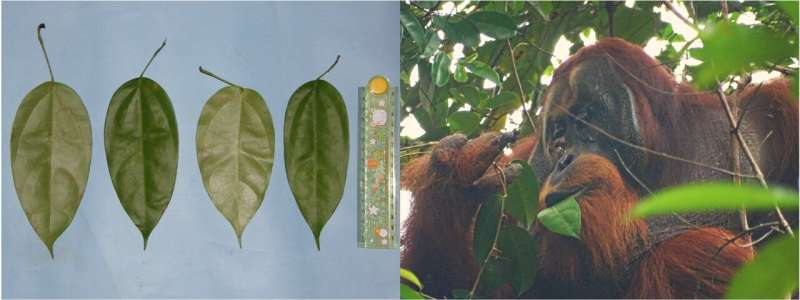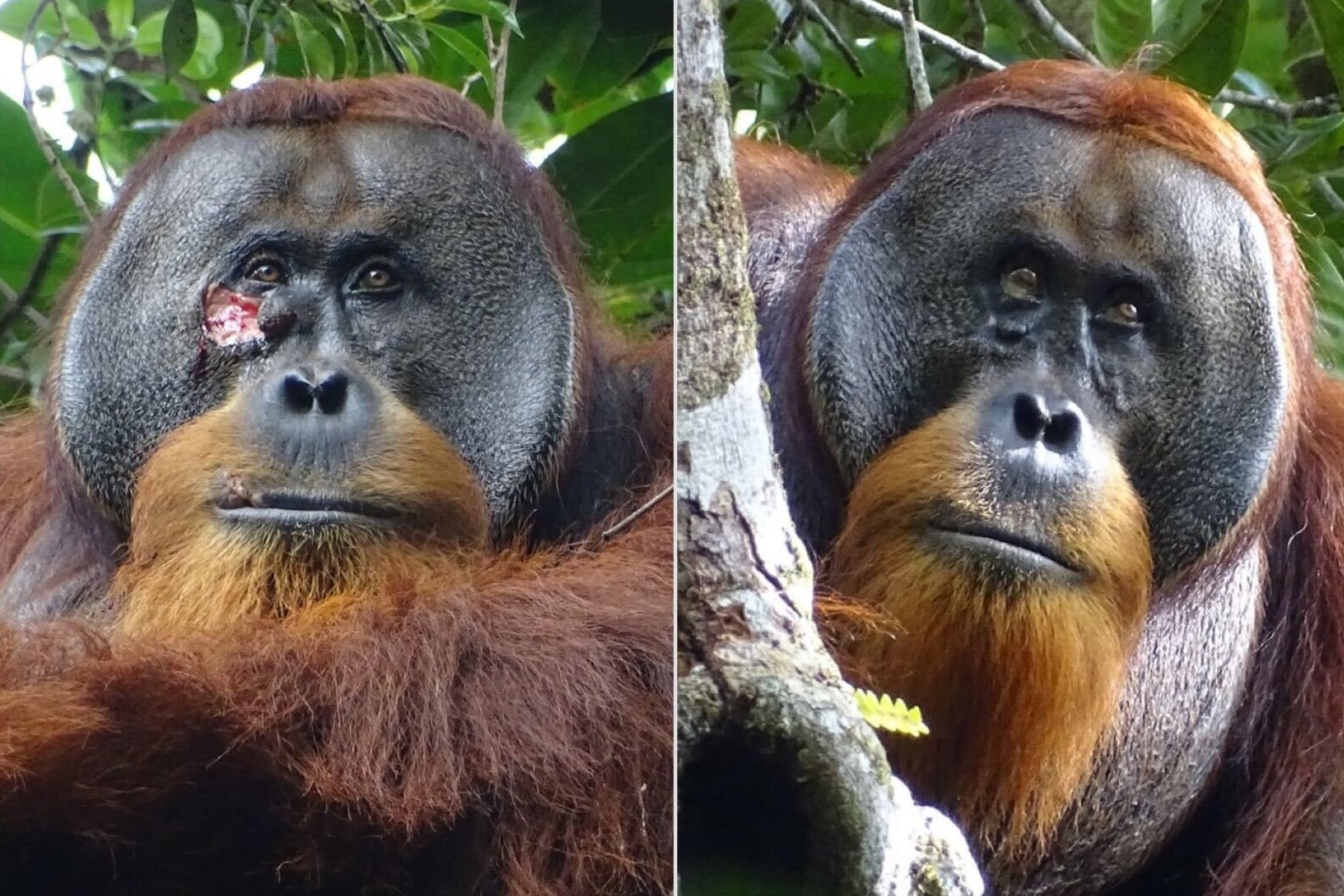Science
Related: About this forumAlternative Medicine An Orangutan Healed Himself With Medicinal Plant
By:
Dennis Thompson
Published on:
May 03, 2024, 6:04 am
Updated on:
May 03, 2024, 6:04 am
FRIDAY, May 3, 2024 (HealthDay News) -- Primates are capable of tending to wounds using medicinal plants, a new case report says.
A male Sumatran orangutan treated a facial wound with a climbing plant known to have anti-inflammatory and pain-relieving properties, researchers say in the journal Scientific Reports.
The orangutan, named Rakus by observers, plucked leaves from a vine called Akar Kuning (Fibraurea tinctoria) and chewed on them, researchers said.
Rakus then repeatedly applied the resulting juice onto his facial wound for several minutes, before fully covering the wound with a poultice formed by the chewed leaves, researchers said.
This is the first documented case of a primate applying a known naturally occurring medicinal substance to a wound, researchers said.
It indicates that the medical wound treatment people receive at home and in urgent care clinics might have arisen in a common ancestor shared by humans and orangutans, the research team says.
“The treatment of human wounds was most likely first mentioned in a medical manuscript that dates back to 2200 BC, which included cleaning, plastering, and bandaging of wounds with certain wound care substances,” researcher Caroline Schuppli, an evolutionary biologist with the Max Planck Institute of Animal Behavior in Germany, said in a news release.
More:
https://www.healthday.com/health-news/alternative-medicine/an-orangutan-healed-himself-with-medicinal-plant
~ ~ ~
Wounded orangutan seen using plant as medicine
1 day ago
By Georgina Rannard,
BBC Science reporter
A Sumatran orangutan in Indonesia has self-medicated using a paste made from plants to heal a large wound on his cheek, say scientists.
It is the first time a creature in the wild has been recorded treating an injury with a medicinal plant.
After researchers saw Rakus applying the plant poultice to his face, the wound closed up and healed in a month.
Scientists say the behaviour could come from a common ancestor shared by humans and great apes.
"They are our closest relatives and this again points towards the similarities we share with them. We are more similar than we are different," said biologist Dr Isabella Laumer at the Max Planck institute in Germany and lead author of the research.
A research team in the Gunung Leuser National Park, Indonesia spotted Rakus with a large wound on his cheek in June 2022.
They believe he was injured fighting with rival male orangutans because he made loud cries called "long calls" in the days before they saw the wound.
More:
https://www.bbc.com/news/science-environment-68942123

Rakus.
Goonch
(3,810 posts)
sanatanadharma
(4,074 posts)"Scientists say the behaviour (sic) could come from a common ancestor shared by humans and great apes."
The reality common to the entire lineage of mankind, in all times, by all names we now know them, is consciousness.
The conscious being is a knowing being as knowledge resides in consciousness.
The body wrappers have evolved and changed and given the consciousness better tools (opposable thumbs, bigger brain database systems).
The collective, institutional knowledge of the species grows and sustains the inbuilt need of conscious-beings 'to know'.
This leads to farms, cities, un-civilizations, science, and sports-experts.
MuseRider
(34,368 posts)We are damned sure we are the only intellegent creatures. If we give anyone of them credit it is usually couched in some kind of way to give us the credit.
Former Zoo person who kept close watch and learned more than I ever even imagined possible.